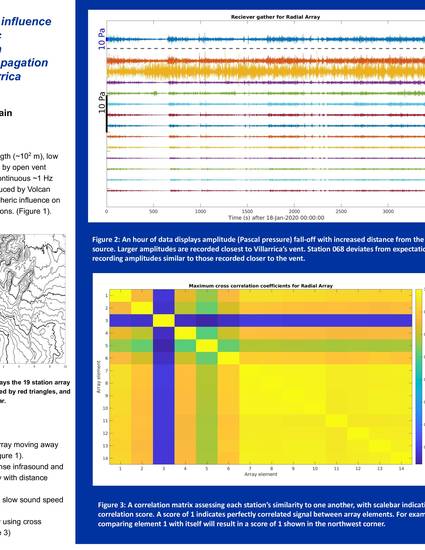
Presentation
Evaluating the Influence of Atmospheric Fluctuations on Infrasound Propagation at Volcán Villarrica
2021 Undergraduate Research Showcase
Document Type
Student Presentation
Presentation Date
4-23-2021
Faculty Sponsor
Dr. Jeffrey B. Johnson
Abstract
Infrasound is long wavelength (~102 m), low frequency sound produced by powerful geophysical phenomena including avalanches, earthquakes, and volcanoes. The continuous and powerful (~101 Db) infrasound produced by open vent Volcán Villarrica in Southern Chile is here used to analyze sound propagation across varying atmospheric conditions. In January, 2020, we deployed 19 sensors in a radial array leading away from the summit crater in order to quantify the impact of the fluctuating atmosphere on the recorded infrasound signal. This data will inform volcanologists about optimal monitoring site selection methods, and will determine changes in signal amplitude and correlation for a ~10 km signal propagation path.
Citation Information
Scott J. Gauvain, Jeffrey B. Johnson, Jacob F. Anderson, Jerry C. Mock, et al.. "Evaluating the Influence of Atmospheric Fluctuations on Infrasound Propagation at Volcán Villarrica" (2021) Available at: http://works.bepress.com/jeffrey_johnson/66/
